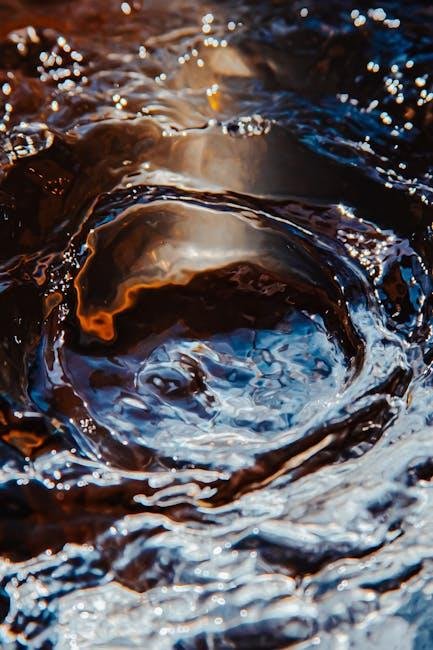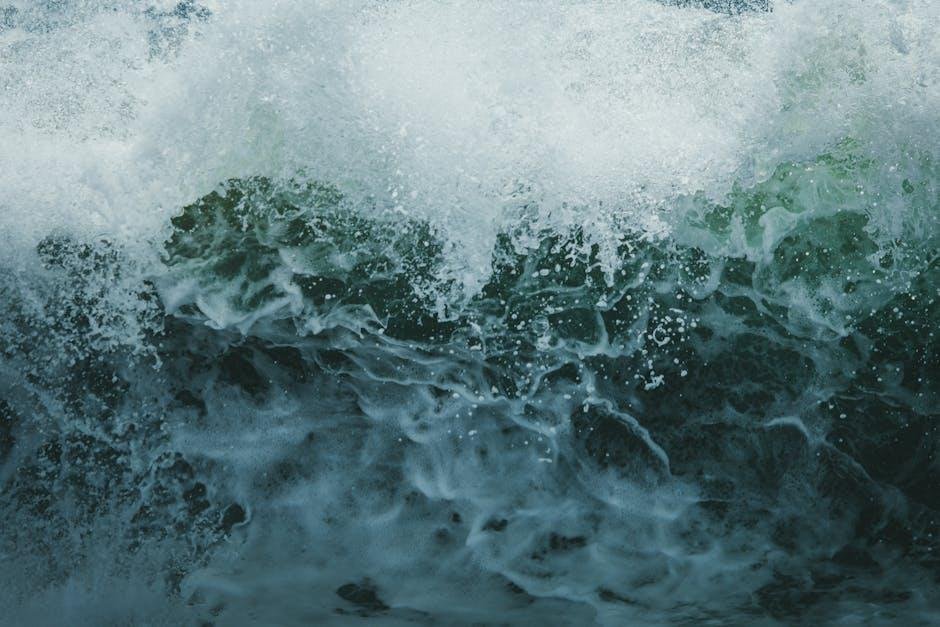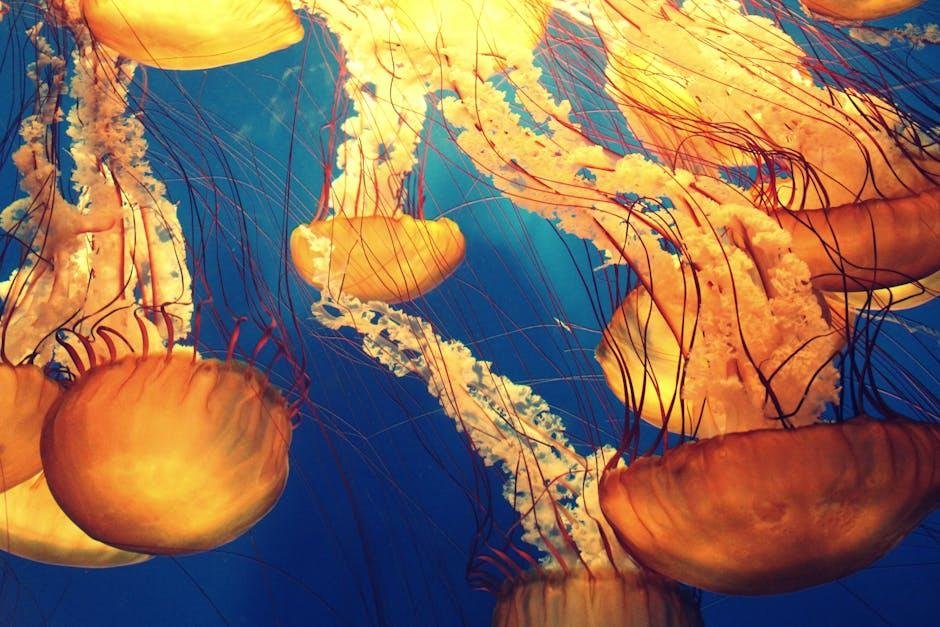How to Read water Currents Like a Pro
Water, with its shimmering surface adn rhythmic flow, frequently enough holds secrets beneath its tranquil façade. For those who venture into its depths—be it for fishing, boating, or simply exploring—it’s essential to understand the intricate dance of currents that shape our aquatic landscapes. Just as a seasoned navigator can interpret the stars, mastering the art of reading water currents can transform an ordinary outing into an exceptional adventure. In this article, we’ll delve into the fundamental principles of water movement, offering practical insights and expert tips to help you decipher the subtle signs of nature’s fluid dynamics. Whether you’re a novice paddler or an aspiring angler, learning to read the currents like a pro will not only enhance your experiance but also deepen your connection to the waterways that beckon us all.
Understanding the Fundamentals of Water Dynamics
To navigate the complexities of water currents, it is indeed essential to grasp their fundamental qualities. Water dynamics encompass the movement of water across various environments—oceans, rivers, and lakes—each presenting unique patterns and behaviors. Understanding the characteristics of currents involves recognizing several key factors:
- Velocity: The speed at which water flows influences how easily objects can be transported.
- Direction: Knowing the orientation of currents can help in predicting their impact on navigation, wildlife, and sediment transport.
- Temperature: Water temperature affects density and, later, the movement of currents.
- Salinity: Changes in salinity levels can cause variations in how water behaves, especially in coastal regions.
Moreover, the interaction between these elements creates a more intricate web of behaviors that can be observed and analyzed. To effectively read water currents, one must also consider external influences such as wind patterns and topographical features.The interplay between these forces can produce various current types, including:
| Type of Current | Characteristics |
|---|---|
| Surface Currents | Driven by wind; typically warmer and less dense. |
| Deep Water Currents | Formed by density differences; colder and denser. |
| Tidal Currents | Caused by the gravitational pull of the moon and sun; cyclical in nature. |

Identifying Key Indicators of Current Strength and Direction
Understanding water currents requires keen observation and awareness of several subtle signals that indicate both their strength and direction. One of the most effective methods is to look for surface disturbances, such as ripples or waves, which can provide insight into underlying flow patterns. Additionally, observing the movement of debris and vegetation on the water’s surface can reveal the current’s trajectory. Here are some other indicators to watch for:
- Color Changes: Notice how the water’s hue might shift based on sediment concentration, which can indicate stronger currents.
- Temperature Variance: Use temperature differences to gauge current strength, as cooler, deeper waters tend to move more slowly.
- Wildlife Activity: Fish and birds frequently enough follow currents; spotting schools or flocks can be a sign of a strong flow.
In addition to these visual cues, utilizing tools like an anemometer or current meter can enhance your readings, especially in deeper waters. The following table summarizes the characteristics associated with different current speeds, allowing you to quickly assess the situation at a glance:
| Current Speed (knots) | Characteristics | recommended Actions |
|---|---|---|
| 0-1 | Vrey calm, minimal movement | Ideal for beginners, perfect for shallow exploration |
| 2-3 | Gentle flow, observable ripples | Good for casual paddling and fishing |
| 4-5 | Moderate current, waves noticeable | Requires steady control and practice |
| 6+ | Strong current, turbulent conditions | Advanced skill needed, risk management essential |

Utilizing Tools and Techniques for Accurate Current Reading
To master the skill of reading water currents, it’s essential to harness a variety of tools and techniques that provide real-time data and insights. GPS devices are invaluable for tracking your movement over water and can help you identify current patterns by comparing your path against known currents. Additionally,using current meters can give you precise measurements of speed and direction,providing a more scientific approach to understanding water dynamics.When combined with anemometers, which measure wind speed and direction, you can better interpret how weather conditions may influence surface currents.
Visual aids also play a crucial role in analyzing current behavior. Employing charts and maps that highlight local waterways can reveal ancient patterns that may not be immediately obvious. Consider using software tools that allow you to overlay environmental data such as tidal information,precipitation,and topographical changes to forecast current shifts effectively. engaging with local waterway communities can enhance your understanding; sharing knowledge and experiences with fellow enthusiasts can uncover valuable insights that pure data may overlook. The interplay of these resources positions you to read water currents not just as an observer, but as an informed navigator.

Practical Tips for Observing currents in Different Environments
Understanding water currents requires keen observation tailored to various environments. In river systems, watch for natural indicators such as the flow of debris or the shapes formed by the bank. Look for eddies, where water swirls back upstream, to determine slower areas where fish may gather. Note any changes in vegetation along the banks, as certain plants thrive in specific current conditions. For lake environments, observe the wind direction and its affect on surface currents. Often, wind-blown sections can lead to convergence zones where currents mix, creating pockets of nutrient-rich water ideal for aquatic life.
In coastal zones, the tidal influence can significantly alter currents.It’s essential to consider the impact of moon phases on tidal flows.Using the following tips can enhance your current-reading skills:
- Check tide charts regularly.
- Be aware of weather patterns that can affect wave action.
- Observe the movement of sandbars and jetties.
lastly, for oceanic currents, keeping an eye on buoys and current maps can provide insight into larger patterns. Consider tracking data on ocean temperatures, which can influence current strength and direction. Utilize the following table as a quick reference for identifying currents based on specific environmental factors:
| Surroundings | Indicators of Current |
|---|---|
| River | Debris flow, eddies, bank vegetation |
| Lake | Wind direction, surface ripples |
| Coastal | Tide charts, wave patterns |
| Ocean | Buoy data, thermal currents |
To Conclude
As you embark on your journey to master the art of reading water currents, remember that the ocean’s rhythm is both a science and a symphony. With each swell and eddy, the water tells a story—a narrative woven from the interplay of tides, wind, and geography. By honing your observational skills and embracing the nuances of hydrodynamics, you’ll not only enhance your safety on the water but also deepen your connection to the ever-changing aquatic environment.
As you continue to practice, let curiosity be your guide. Whether you’re paddling along a serene river or navigating the tumultuous seas, each experience offers a new lesson and prospect for growth. Trust your instincts, stay alert to the subtle signs nature provides, and don’t hesitate to revisit the fundamentals regularly.
With patience and persistence, you’ll soon find that you can navigate water currents like a pro, unlocking new adventures and discoveries along the way. So grab your gear, chart your course, and prepare to embrace the water’s fluid language—it’s time to dive into the depths of understanding!
